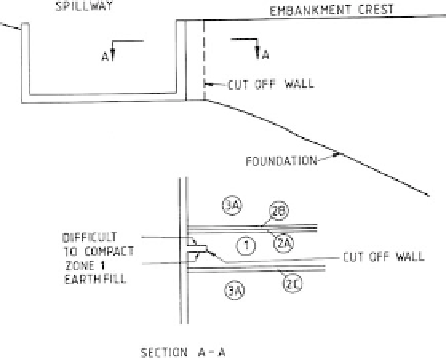Environmental Engineering Reference
In-Depth Information
13.6
INTERFACE BETWEEN EARTHFILL AND CONCRETE STRUCTURES
Just as the contact between earthfill and outlet conduits can be a potential zone of weak-
ness in an embankment, the contacts between earthfill and concrete structures, e.g. the
wall of a concrete spillway, can be potential sources of cracking and piping failure.
Earlier practice was to construct a cutoff wall at right angles to the wall of the structure
to penetrate into the earthfill and increase the seepage path. Figure 13.20 shows an exam-
ple of this and the difficulties that are created because rollers cannot be used to compact the
soil adjacent the walls.
To overcome this Sherard and Dunnigan (1985) recommend that no cutoff wall be pro-
vided and that the contact be detailed as shown in
Figure 13.21
. This approach is recom-
mended by the authors as it recognizes that the cutoff walls only hinder compaction and
that seepage is inevitable leading to possible cracking. Such seepage should be controlled
by well designed filters.
For this arrangement compaction of earthfill above standard optimum water content with
rubber tyred equipment is possible right up to the wall. The wall is left smooth, off form
concrete, not sandblasted, chipped, painted or treated in any way. The downstream filters
may be widened. Sherard and Dunnigan (1985) suggest that, if the Zone 2A filter contains
a significant quantity of gravel sized particles, there is a danger the gravels could segregate
at the concrete-filter interface leaving pockets of gravel without sand in the voids. In this sit-
uation they suggest placing an additional filter consisting only of sand upstream of the Zone
2A filter (as well as widening the Zone 2A and 2B filters).
They suggest that the angle
in
Figure 13.21) may be made say 80° to increase the pressure on the contact as the dam
water load is applied. They point out, however, that many dams have been successfully
constructed with
at which the dam axis intersects the wall (angle
90°.
It is recommended that, if highly dispersive soils are being used for construction, con-
sideration should be given to adding lime in the vicinity of the contact with the concrete
structure (in addition to the features detailed above).
Where the dam generally has no filters, it is strongly recommended that filters are pro-
vided in the vicinity of the contact.
Figure 13.22
shows two situations where settlement of the dam fill during or after con-
struction, or in an earthquake, can cause a gap to form between the embankment fill and
Figure 13.20.
Poorly detailed contact between earthfill and spillway wall with a cutoff wall provided.


